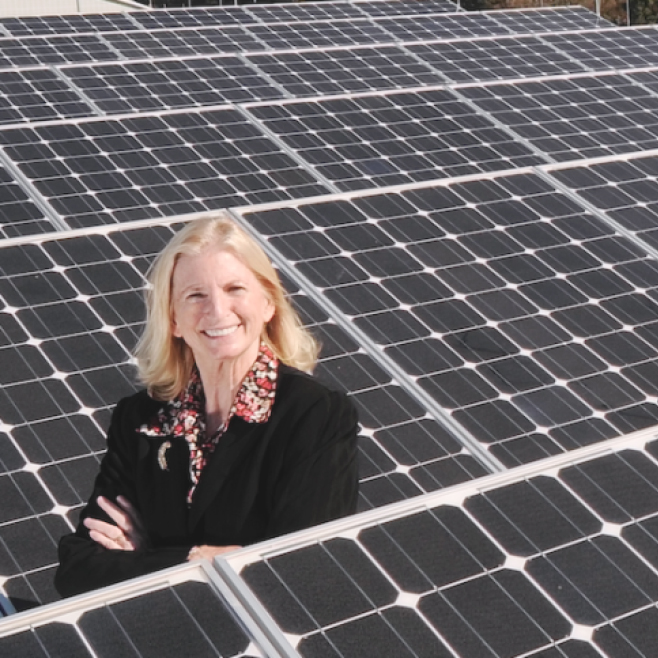Georgia Tech Experts Lead in Electrification of America’s Roads
Idling at a crossroads no longer, the automotive industry is embracing electrification like never before. With more electric vehicles purchased in 2022 than any year prior, consumers are beginning to follow their lead. Yet, while opportunity abounds, new challenges will require an innovative approach to ensure a sustainable and accessible electric future for all.
By: Steven Gagliano
With historic investments from major players in the EV space, including Rivian, Kia, and Hyundai, the state of Georgia is uniquely positioned to serve as a leader in this effort. As the state’s leading research institute, Georgia Tech is on the cutting edge of the movement.
The transportation sector is the largest greenhouse gas emitter in the U.S. at nearly 30%, with passenger vehicles accounting for around 80% of the sector’s total output1 as of 2019. Electric vehicles are widely regarded as a budding solution to reduce emissions, but even as both demand and production continue to increase, EVs currently account for around 1% of the cars on America’s roadways.
From the supply chain to the infrastructure needed to support alternative-fuel vehicles alongside consumer hesitancy, achieving the goals set by both the public and private sectors — including the Biden Administration’s target of EVs making up at least 50% of new car sales by 2030 — will not be easy. Through research and development, policy, and collaboration, Tech experts are working toward finding solutions that will serve as catalysts during this transitionary period for the environment and the way Americans drive.
Actual Emissions
How green is the technology?
Unlike their gas-powered counterparts, EVs have zero tailpipe emissions, but as Valerie Thomas points out, that doesn’t tell the whole story.
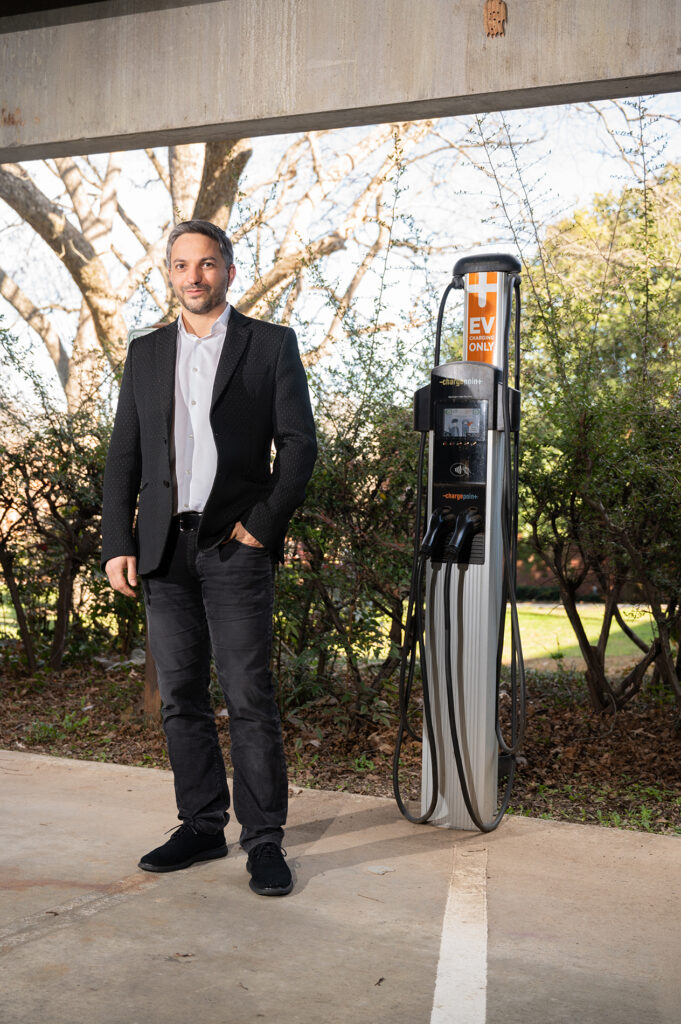
Producing electric vehicles emits greenhouse gases, and “people should not mistake getting an electric vehicle for somehow having no emissions,” said Thomas, the Anderson-Interface Chair of Natural Systems and professor in the H. Milton Stewart School of Industrial and Systems Engineering.
While proving to be more efficient over its life cycle, according to The Guardian, the production of an EV generates up to 60% more carbon than a gas-powered vehicle due in large part to the mining of lithium, nickel, cobalt, and graphite for battery production.2
Among those working to reduce the pollutants of the production process and alleviate the reliance on inhumane labor practices is Gleb Yushin, professor in the School of Materials Science and Engineering. A primary focus of Yushin’s research is the development of high-performance battery chemistries that rely on low-cost, broadly available materials.
“It’s clear that Georgia Tech’s research capabilities and facilities are cutting-edge, which is what the battery industry needs to continue innovating,” he said. “As the electric mobility capital of America continues to grow in Atlanta, I’m excited about the opportunities for battery manufacturers to partner with Georgia Tech researchers to develop the next generation of battery materials and processes. The time to act is now.”

Cost of Doing Business
Can innovation drive down the cost?
Among the factors preventing a large-scale adoption of EVs is cost. The average price of an EV reached $66,000 in 2022, and the battery is the most expensive component, ranging from $10,000 to $20,000. Battery costs rose last year as material shortages began and the cost of nickel soared, further underscoring the need for improving battery chemistry.
Yushin’s battery startup, Sila, created a nanocomposite silicon as an anode replacement for graphite. It creates a higher energy density and achieves a higher efficiency level with 20% fewer cells, thereby reducing CO2 consumption during production. Sila was recently awarded $100 million from the U.S. Department of Energy to support the company’s domestic battery materials processing and manufacturing.
With limited resources and a growing number of batteries nearing the end of their life, a multibillion-dollar industry that could offer sustainability solutions remains in its infancy. In the years to come, battery recycling will play a key role in driving down the cost of batteries and lessening the industry’s dependence on mining raw materials.
A handful of companies are in the process of expanding their battery recycling capabilities, but those processes often require heating elements to high temperatures, creating additional environmental hazards, and are incapable of extracting the leftover lithium from battery cells.
Hailong Chen, associate professor in the School of Materials Science and Engineering, believes the current capability of the recycling industry is insufficient and needs further expansion. His lab is developing a recycling method that uses an inexpensive organic solution to extract lithium and a higher concentration of reusable materials without harmful environmental impacts. While these tests are being done on a smaller scale, Chen is writing a pair of proposals in the hope of expanding his research and launching a startup.
For battery recycling to meet its true potential, there must be available material. It’s estimated that just 7% of lithium-ion batteries — also used in cellphones, laptops, and power tools — are being recycled, compared to over 99% of lead-acid batteries, which were banned from landfills in 1990. Chen believes similar legislation will be necessary to ensure that lithium and other materials are not being taken out of the supply chain prematurely. He also stressed that while not all the materials recovered can be used for EV batteries, they can be used elsewhere to maximize their value.
 Battery Day
Battery Day
Georgia Tech recently hosted Battery Day on March 30, convening research and industry leaders to advance energy storage technologies.

Policy Drivers
Can policy be an infrastructure catalyst?
Just as fuel efficiency in gas-powered vehicles has improved over time, so has EV range, but the practicality of alternative-fuel vehicles continues to play into consumer hesitancy in the absence of a fully realized charging infrastructure. With just under 51,000 public charging stations nationwide, sizeable gaps remain between metro and rural areas — an issue being addressed in Georgia with the assistance of the Electric Mobility Innovation Alliance.
Formed by Gov. Brian Kemp, who recently reaffirmed his goal of making Georgia the “electric mobility capital of America,” the task force aided the Georgia Department of Transportation in its preparation of a plan to allocate $135 million over five years. The funding, created by the Infrastructure Investment and Jobs Act (IIJA), aims to ensure that a charging station is located along every 50 miles of the Alternative Fuel Corridor, less than 1 mile off each exit. Georgia has nearly 1,700 charging stations and 42,500 registered electric vehicles as of September 2022 — a 174% increase from 2014.
Each station has a limited number of ports, however, Maryam Saeedifard, professor in the School of Electrical and Computer Engineering, is working on a solution. In 2021, Saeedifard and co-author Pengcheng Zhang received a 2021 IEEE Transactions on Power Electronics First Place Prize Paper Award for their research on integrating wireless power transfers for electric vehicles.
Rich Simmons, principal research engineer and director of Research and Studies at Georgia Tech’s Strategic Energy Institute, took a leading role in the launch of the Southeast Electric Transportation Regional Initiative (SETRI). This coalition of automakers, businesses, nonprofits, state agencies, and other entities promotes EV development in the region, which is home to 18% of the nation’s population and over 28% of its EV manufacturing investment.
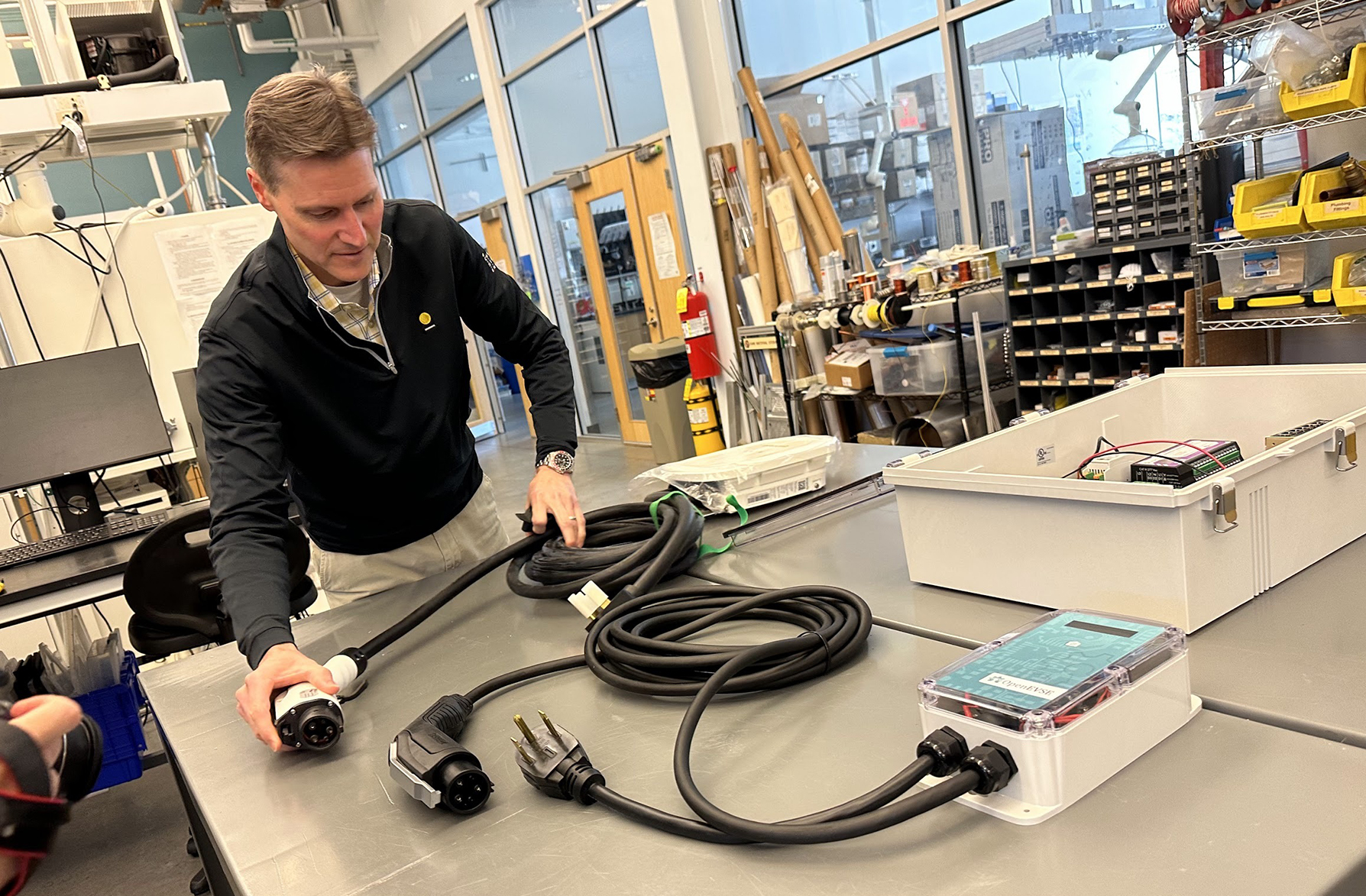
“We’re bringing together those stakeholders to hear from each other. There’s a lot of federal money flowing that is intended to accelerate the uptake of EVs,” Simmons said, alluding to the IIJA and the Inflation Reduction Act. “SETRI’s role has been to help users digest how to get money and how to partner with other organizations to access research like we’re doing, to better inform their decisions and ensure that when they spend money, they get a return on investment.”
The legislation, which also extends the $7,500 tax credit for new EVs and creates a $4,000 credit for used vehicles, was discussed at length during Vice President Kamala Harris’ visit to campus.

Demands on the Grid
Can the power grid keep pace?
Speaking during Fall Commencement in December 2022, Marilyn Brown, Regents’ Professor and the Brook Byers Professor of Sustainable Systems in the School of Public Policy, stated that society “can’t manage what it can’t measure, and metrics motivate action.” Leading Drawdown Georgia, Brown and her team track greenhouse gas emissions by source across the state to identify solutions to reach carbon neutrality.
Transportation remains just one piece of the puzzle in terms of emissions, but the group estimates that replacing 250,000 gas-powered vehicles by 2030 could reduce emissions by 1 million metric tons.3 The average person is responsible for approximately 15 tons of CO2 per year.
If EV sales continue to increase, will the electric grid be able to handle the stress? Brown, a co-recipient of the 2007 Nobel Peace Prize for her work on the Intergovernmental Panel on Climate Change Working Group III Assessment Report on Mitigation of Climate Change and a former regulator on the board of directors of the Tennessee Valley Authority, believes it can. She explained that Georgia and the Southeast have an excess capacity of 18% above peak performance at any given moment.
Valerie Thomas cautioned that steps must be taken to ensure the grid does not become overburdened. Chairing a committee of the National Academy of Science, Engineering, and Medicine on methods for calculating greenhouse gas emissions from low-emission transportation fuels, Thomas looked specifically at how “managed charging” could unlock a new level of grid efficiency.
“Charging electric vehicles at low-demand times can reduce electricity costs for all customers by making better use of the electricity generation we already have,” she said. “And we showed that greenhouse gas emissions also decrease. With unmanaged charging, however, more power plants need to be built and the opportunities for electricity cost savings disappear.”
Thomas further explained that managed charging would allow proper distribution across the grid, ensuring that all EV owners aren’t pulling additional power at peak times while the majority of individuals are running home appliances.
Of course, charging stations are only as green as the grid they draw from, which in Georgia is primarily powered by natural gas (46%), followed by nuclear power (27%), coal (15%), and renewable energy (12%).4 Brown’s research, which contributed to her election to the National Academy of Engineering, highlights the benefits of investing in renewable energy that will help close the energy efficiency gap. She also advocates that individuals interested in buying an electric vehicle explore powering their home with solar panels and using heat pumps.
The use of solar to mitigate stress on the grid and improve efficiency is currently the subject of a pilot program run by Simmons at the Carbon Neutral Energy Solutions Lab on campus. Two parking spaces will be allocated for the program, with solar panels fixed on the roof of the lab and the parking structure itself powering the pair of charging stations.
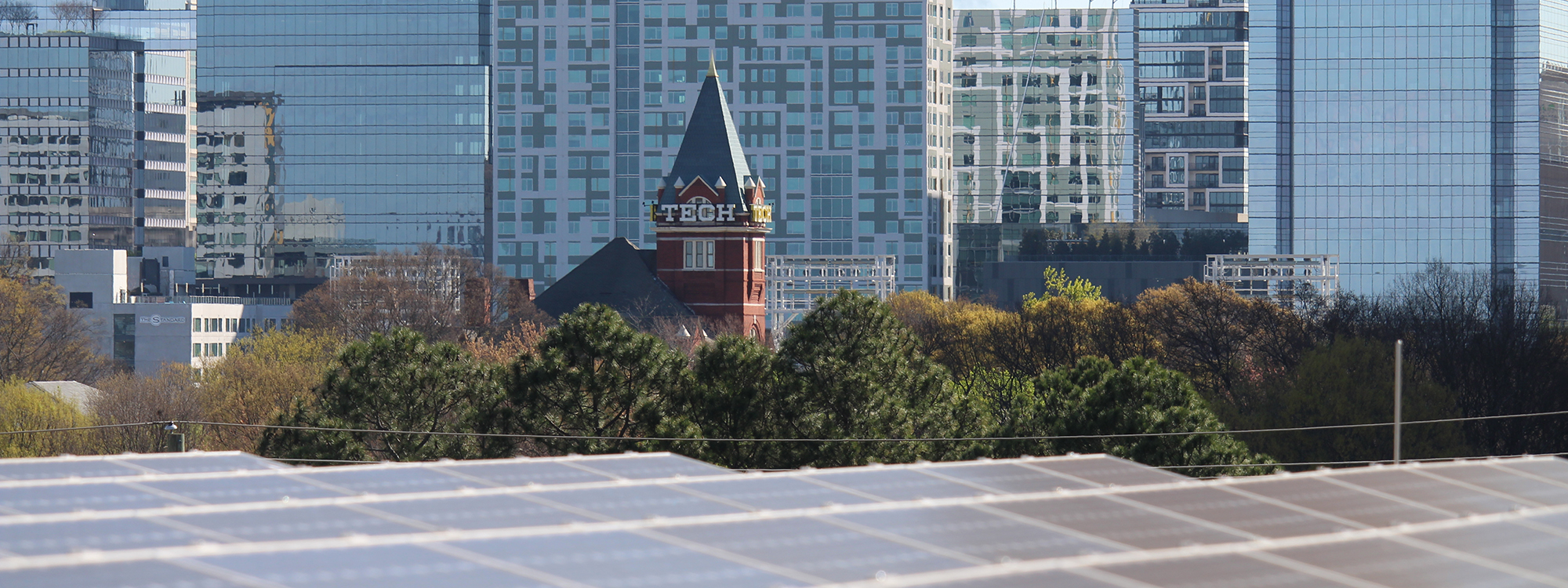

Meanwhile, on Campus
How is Tech moving toward carbon neutrality?
Metro areas often have a larger concentration of EVs and charging stations, and Atlanta is no exception. Parking and Transportation Services (PTS) has seen an uptick in charging station usage over the past decade. There are currently 42 level two charging stations on campus, with plans to expand. The Dalney Deck, completed in 2019, adheres to the recently enacted city ordinance that requires new parking structures to have at least one EV charging-ready space for every five traditional vehicle spaces.
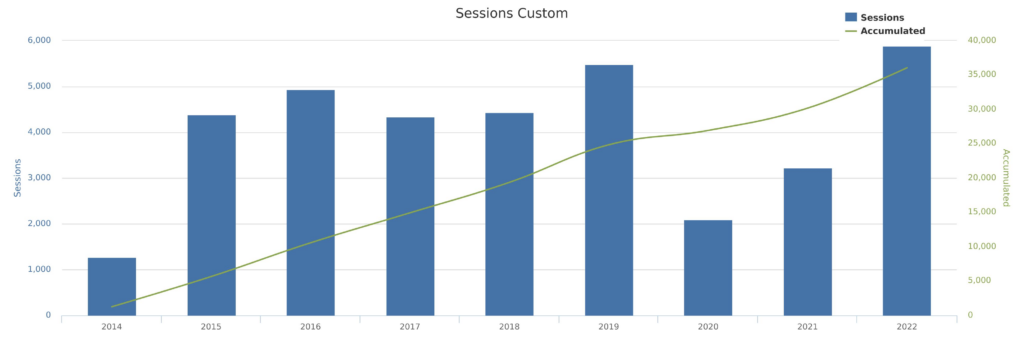
With an Institute-wide goal of reaching carbon neutrality by 2050, earlier this year the department launched its first of nine hybrid Stinger buses capable of operating fully electric for about 20% of their route — reducing emissions and increasing fuel efficiency.
“We are thrilled to launch hybrid buses on campus. We are making an important step toward reaching our sustainability goals and reducing campus’ carbon footprint,” said Sherry Davidson, senior director of PTS. “We believe it is a positive change toward fostering a culture of sustainability.”
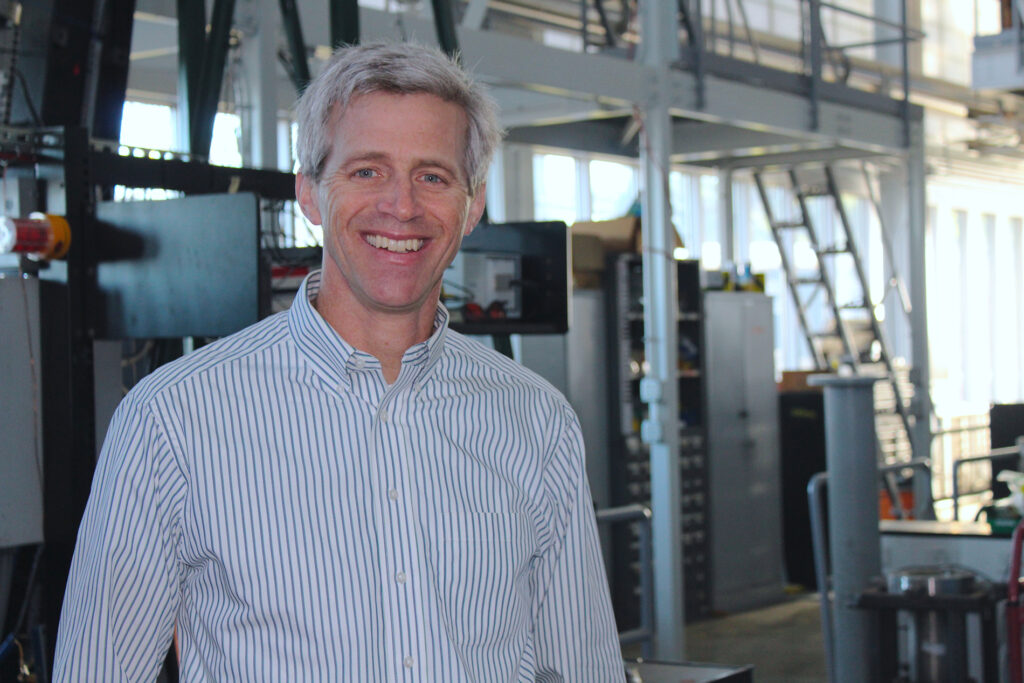
All told, more than 1,000 faculty members and students are working on energy R&D at Georgia Tech. As a system integrator, the Strategic Energy Institute provides them with the tools to investigate the pressing needs in this sector and develop solutions for the next generation.
“The scale and breadth of what Georgia Tech is doing in electrification is amazing. We’re starting companies, working with companies, and doing foundational R&D, but we’re also testing applications that are being deployed in the field today. It’s an exciting portfolio,” Executive Director Tim Lieuwen said.
The day that a majority of the cars on America’s roadways are electric may still be a distant vision, but Georgia Tech is primed to play a leading role where the future of energy and transportation intersect.
![]()
Georgia’s at the Epicenter of Nation’s EV Revolution
President Ángel Cabrera recently co-authored an opinion piece about cleantech manufacturing with Katie Kirkpatrick, president and CEO of the Metro Atlanta Chamber.
![]()
Parking and Transportation Services Rolls Out Hybrid Bus
The EZ Rider II hybrid buses were unveiled in January as Georgia Tech took another step toward decreasing its carbon footprint.
![]()
Thomas Leads Report Evaluating Lifecycle Emissions
A report led by Valerie Thomas presents lifecycle assessment as an essential tool in helping researchers and policymakers evaluate low-carbon fuel standards to reduce emissions.
![]()
Nearly Two-Thirds of Georgians Support Action on Climate
A majority of Georgia residents strongly supports new solar and wind power capacity over new coal-fired plants and believe the state should set a carbon emissions reduction goal.
Credits
Writing and videos by Steven Gagliano
Editing by Stacy Braukman
Design by Kristen Bailey
Footnotes
1 – https://www.cbo.gov/publication/58861
2 – https://www.youtube.com/watch?v=Chp9VlSs25c
3 – https://www.drawdownga.org/solutions/transportation/
4 – https://www.eia.gov/state/?sid=GA



